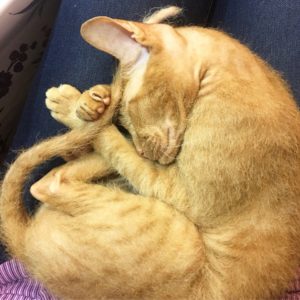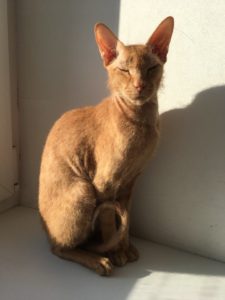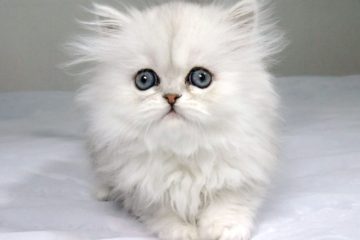About the Donskoy Sphynx cats breed
The Donskoy is also named to as the Don Sphynx, Russian Donskoy, Don hairless and Russian hairless. These middle-sized, athletic cats have little to no hair and shrunken skin. Their feet are round-shaped with long, slender, soft toes. The head is triangle-shaped like a wedge and is flanked by wide, long ears and lemon-shaped eyes. The eyes can be a different number of colors. Their weight could be 6-12 pounds and life expectancy is 12-15 years. 
Donskoy cats breed commonly have 4 coat kinds in various colors:
- First one is the Rubber bald. Born bald and stays bald.
- The second type is named Flocked. Borns hairless and feels like a chamois. The cat may become bald.
- The third type is Velour. Appear with a bald spot on the head; the hair little by little disappears but may stay on the face, paws, and tail.
- The fourth type is Brush. He has more hair is saved but bald spots may take place. The hair can be soft or wiry.
 The coat is alike to human skin. Moreover, the cats can grow a coat for winter with short undercoat (generally on the chest and tail) that Donskoy cat loses when the weather becomes warm again.
The coat is alike to human skin. Moreover, the cats can grow a coat for winter with short undercoat (generally on the chest and tail) that Donskoy cat loses when the weather becomes warm again.
The country of origin
Donskoys were bred accidentally in Rostov-on-Don, Russia, in 1987 by Elena Kovaleva. She saw boys who were torturing a kitten, she stopped them and took the kitten home. The first Donskoy kitten was named Varvara. The kitten wasted her fur over time, and Kovaleva tried to treat the skin without success. Years later, Varvara had kittens, the litter included hairless and haired offspring.
People thought the loss of hair was caused by an illness or disease, because of the kittens also lost their hair. Consequently, there was little interest in the cats. Then Irina Nemikina took one of the kittens and began a breeding program as a professional breeder. The coats without hair continued with following litters, and assumption changed to a gene necessary for producing the coats. But you should not confuse with the better-known mostly hairless breed of cat, the Canadian Hairless Sphynx, whose feature hair suppression is caused by a recessive gene when the Don baldness is caused by a dominant gene. The Donskoy cat breed was first formally welcomed by World Cat Federation (WCF) in 1997, and by The International Cat Association (TICA) in 2005.
The personality of the Donskoy Sphynx cat breed
Donskoys are tender and smart, which makes them easy to train. They are as well curious, loving and secular cats who like being with people and other pets — however, they might not be friendly to other cats at times. 
Donskoy cat feels upset when the cat parent leaves him alone for a long time. They require lots of care and interaction, so they’re not recommended for anyone getting a pet cat for the first time or for people who aren’t home during all day. The Don hairless cats are very devoted — actually, their fidelity is often compared to that of dogs.
You should know!
You should keep your Donskoy indoors. Not only are Don cats sensitive to problems with outside temperature extremes but also, because they are uncommon and rather rare, someone may be tempted to steal them. Moreover, your cat’s friendly nature means he may not evaluate dangers right.
Grooming and care
Bathe your Donskoy once monthly or more frequently as needed. Rubdowns and baths protect cats skin from problems. Also, you should clean their large ears properly, about once a week, to delete debris and wax mass and exclude infection. Donskoys are amenable to gum disease and tooth decay (dental care), thus, tooth brushing is a necessity as well.
The Donskoy cats lost little to no hair or dander, and people with allergies have been able to live with them without any problems. They need compatible temperatures indoors, so you should buy a sweater or maybe other clothes. My cat always trying to sit near the warm stuff like a samovar! I am not joking!
The health of the Donskoy Sphynx cat breed
Probable health problems include:
- Problems with skin
- Sunburn
- Gum disease
- Tooth calculus can appear
As you know Donskoy cat has a higher body temperature than majority cats have, that is why he eats more. To support his body temperature during the winter, your Donskoy will need more food than usual. His intake should return to normal once winter has ended.


